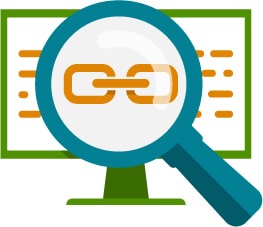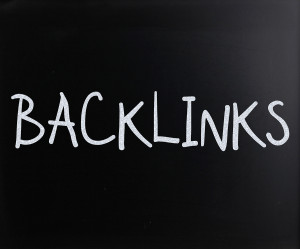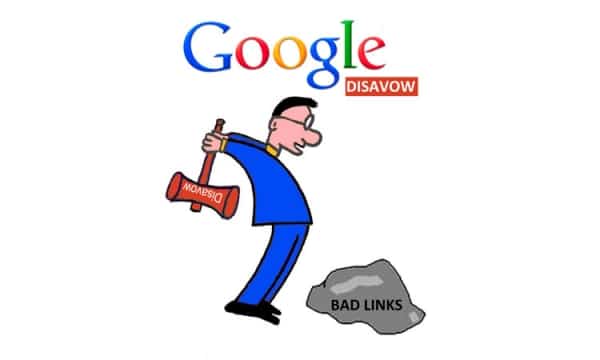
Building up an intricate web of links is the nirvana for any digital marketer, especially an SEO professional and there comes the importance of link auditing! However, difficult as it is to procure quality links to integrate into your web, it is even more complicated to ensure that you audit them correctly.
Wrong audits, or even misguided audits, will result in unwanted links cluttering your backyard. Before you know it, there will be some spam links coming in and finally flooding the show. It will invite penalties from Google and scorn from your potential customers. With the right link audit, you can bid goodbye to both of these problems.
There is a catch here. There are a number of free tools available online that will help you in auditing links. I’m not a big fan of these free tools and prefer to audit my own links with the help of Microsoft Excel and Google Spreadsheets. It ensures that I sift through the linking data myself and learn how things are working for the website. I’m basing these tips on the basis of manually auditing links and not through the use of free tools. You can use spreadsheets of both Excel and Google for this purpose.
What are backlinks?
Backlinks are the links pointing to your website from various other websites. The links can be pointed to your website’s homepage (That’s called homepage backlinks) or to your internal pages (That’s called deep links) via various anchor texts or images or buttons from other websites. It is recommended that you earn natural backlinks from good quality relevant & related websites on regular basis by posting high quality content on your own website.
What to Consider for Backlinks
It has been universally accepted now that backlinks are building blocks of your SEO initiative. Here are the most important factors to consider for backlinks.

It has been universally accepted now that backlinks are the building blocks of your SEO initiative. With the help of quality backlinks you are confident about taming the search engine giants and get your brand its proper place under the SERP sun.
There is no harm in thinking on these lines, except that with new update and algorithms flowing out from the house of Google, you have to consider various other factors as well. The most important factors to consider while looking for backlinks are listed here:
- Link to Right Web Pages: You have often heard it being said: you are known by the company you keep. For backlinks this works truer than it does in the case of humans! The value of your backlinks is directly proportional to the websites that you are linked with. If you have the correct backlinks that lead to your website from high traffic zones, you are in a strong position from an SEO perspective. Getting more backlinks is not the key: what matters is the source of the backlinks.
- No More Robots: You have to quit thinking of the backlinks building as something done by automated robots. That is a thing of the past. With the introduction of sophisticated algorithms and technology, Google pins down spam backlinks faster than you think. Before you know what hit you, your website will slide down fast on the SEO pecking order. Think of quality backlinks brought home by humans and you will do fine!
- Be Sincere: You will surely get quality backlinks from reputed websites if you have a nose for sincerity. There is a lot of talk and negotiation done on the internet so webmasters are wary about even polite exchanges through emails. However, if you are forthcoming and honest about what you are looking for and what you have to offer, it will always ring true with people who matter. Add that personal touch and get in touch with webmasters of websites that can give you backlinks worth a million dollars. All you need is passion and conviction.
How to build backlinks? [Video tutorial]
Link building best practices [Video tutorial]
How to audit backlinks?
Here are few tips on how to do backlink audit.
Link Auditing Tip #1: Segregate Domains and Subdomains
To audit links, you need to accumulate all the data first from Google Search Console. Download all the links you have spread out over innumerable sources! The tough part is to manually evaluate if you need all of these links at all. You will want to check at least one link from every domain.
Even then, you find that many of these domains have uncountable number of links leading to them. To check just one link per domain, you have to extract the domain or the subdomain from every single URL. The data, when segregated, looks easier to evaluate and audit.
Link Auditing Tip #2: The Process of Review
I have found that there is little sense in checking through every link of a domain, like I mentioned above. However, this process of reviewing is not cent percent accurate. While a single link can paint a picture of what the corresponding domain holds for you in terms of link value, it can also be slightly misleading.
Often, you may find that a good link and a bad one coexist in a single domain. With just a cursory glance at the link or the domain, you may not always find it out and remove it. The manual process of review has little scope to identify them individually. If you are careful about picking out those links, you need other internal checks, like using Scrapebox, to weed them out. Otherwise, this manual check of one link is enough to measure the health of a domain.
Link Auding Tip #3: Finding a Method in Madness
The time is now ripe to tell you how you can find a pattern in all the hundreds of links that you have downloaded. Usually, spammy links do have a pattern that makes them identifiable. With these URLs having a common factor, you can use that common factor in the spreadsheets to pick out every spam link bearing that pattern.
For example, you may find, on a cursory glance, that more than one unnatural links have the words “example” in them. Find out all the links that have the word “example” and you have a pattern of spam links. Other examples of such patterns include: spam links may come in from a common free subdomain like blogspot or weebly; these spam links may have a common keyword functioning as an anchor text.
Link auditing Tip #4: Check and Update Disavow File
All these spam and unnatural links that you have picked up should be clubbed under a file head for disavowed links (Link Disavow). You can check these links against new links that you download in the future. Once you have disavowed some links, do not spend time reassessing them. Instead, carry out the process of updating your link profile and adding more disavowed links to the current crop. Maintain separate sheets to keep adding to the list of spam links.
Google’s Disavow Tool: What You Need to Know

Any website that is actively optimizing itself on search engines is most likely to pick up a few web links here and there that have dubious sources. When you hit the highway of SEO and with Google’s Penguin updates breathing down your neck, as a SEO professional or webmaster, these links can cause much embarrassment. They can bring down the sword of penalty on your website, not to mention the bad reputation that it picks up in the process. Now, Google offers everyone the disavow tool.
What is the Disavow Tool?
The answer is simple when you consider an analogy from the various spy films that you must have watched over the years! Field agents are renounced or cut loose when they are caught in enemy territory. The parent body announces that it has no link with the spies nabbed during field duty. That is called disavowing the agents. It is very similar to Google’s disavow tool. With the help of this tool, you can declare web links that you are not comfortable with as not belonging to your network anymore. These unnatural links may have appeared for whatever reason but you can cut loose from their presence with the help of the disavow tool.
Google is offering a chance for SEO experts to control what kind of effect external links will have on their websites. Often it has been seen, low-quality links coming to your site is pulling down the credibility of the website in the view of Google. These are links that you have no control over. With the help of the disavow tool, you can ask Google to ignore these links when they are analyzing your website. In a way, you are disowning these links because you didn’t ask for them anyway.
Google’s View of the Disavow Tool

Here is a very interesting snippet of information about Google’s own perception of the disavow tool. We have picked this up from the official web page of Google:
It makes it sufficiently clear that you need to learn the tricks of the trade first before you hit the Google disavow tool. Otherwise, as evident, you might end up snapping web links that actually provided you SEO juice or simply destroy the network structure online.
What You Need: Audit
Now that you have decided to use Google’s disavow tool, the first step in the right direction is conducting an audit for your entire web link network. There are a ton of tools available online that can do the job for you. According to me, the best way out is doing it manually as far as practicable. Check each link and flag the dubious ones. Map these links out on a spreadsheet before you proceed to the next step.
You can conduct the auditing process in three easy steps:
- Download all the web links that you have from all sources available to you. You can take the help of tools like opensiteexplorer.org and majestic.com
- Use Google Docs or MS Excel to bring all of these links on to a single page
- Break them down into subdomains
- Use the dedupe function on spreadsheets to ensure that only one link from each domain is present on the page
- Check each of the web links now, armed with three important questions:
- Is this link important at all in bringing online visitors?
- Is this link present solely for the benefit of SEO?
- Is this link good enough to stand up to Google’s scrutiny?
The answers to these questions will determine if you need the links.
Tips on Google’s Disavow Tool
Let us take a quick look at how Google looks at the disavow tool so that you get a grip on what to do with the dubious links that you have unearthed in the auditing process.
- Do not panic when you see web links that have surfaced out of nowhere! Google is not paranoid about such links, nor is Penguin. The idea of the disavow tool is to do a cleaning up job of your web links. It does not mean that you take down every single web link that seems suspicious on first glance.
- Make sure that you disavow links not on the URL stage, but on the domain stage. If you don’t do that, you might miss out on some rotten URL links in the process as they might be embedded deeply into the domain.
- If possible, remove the links that you have disavowed with Google’s tool. However, if you find the process cumbersome and time consuming, you can leave it at that.
- You can bring back a disavow link if you think that you have jumped the gun. You need to modify the disavow file. But don’t expect the ‘reavowed’ link to kick into action straightaway! It takes considerable time for it to get back into the groove. As Matt Cutts says, it is easier to disavow than ‘reavow’.
Important Points to Consider Before Disavowing Links
By means of this disavow tool, bloggers especially the webmasters can disavow or turn down certain links that are being directed to their website.
Google assess websites and give it a ranking that it deserves. However, if bad links are all over your site, it could get tarnished and be given a poor rating. This is where the disavow tool can be of help, once those suspicious links are disavowed, Google will ignore them so your site will not be affected at all.
Typically, rivals send those bad links to their competitor’s website to discredit them by having Google penalized and place them on disadvantageous level. This only implies that spammy links have the ability to jeopardize a site’s ranking as Google give more importance to the quality over quantity of the backlinks.
The tool will help you turn those links into useless strategy for bringing down your site. But then again, you cannot simply go around disavowing all dubious links that you ever find. To make sure that you are doing the right thing, consider these 3 important points first before disavowing links:
1. Have your site been penalized before?
Websites that are teeming with bad links are normally penalized by Google. If you have been fined, you will receive a message informing you about it. But receiving such message can also be caused by other things like issues on the server and busted links. This could be easily mistaken as a penalty. As a result, there are so many site owners or webmasters who think they have been penalized when they are not.
It is a good idea to verify if your site was indeed fined or not. It is only after the verification that you could safely proceed with your disavowing plans.
2. Do you think that the links are really harming your site?
Frankly speaking, there’s no definite way of knowing which links are good and which ones could damage a site. All that you can do is to uncover the bad ones with the aid of the webmaster’s tools. The tool will let you see which Google has pointed out to be the damaging links.
If you will not be cautious and simply disavow links without a thought, you could be actually getting rid of good links which are helping your site.
3. Consider the time that it takes to disavow links
After submitting your list of links that you would like to disavow, do not expect Google to act on it at once. It will take time and you can’t do anything about it. Hence, make sure to only submit your request when you are 100% confident with it.
To put it briefly, never immediately jump into disavowing links and assume that the work is already done. Look further than this. Additionally, do not just focus on the links that you want to disavow but pay attention to those that you must create as well. The newly formed links will serve as replacement for the ones that you will get rid of via the disavow link tool.
Plan first before you act so that your site will only have things to gain rather than lose. If used properly, the disavow link tool could be your hidden card for boosting your ranking and improving your site’s usability.
How Best to Disavow Bad Links

There is always some doubt in the minds of webmasters when it comes to identifying and removing bad links. There are generally unsure if they have got rid of all the bad links that we’re affecting the performance of the website on Google search results. Now there is some clarity coming in from John Mueller when he was answering questions put to him on Google Webmaster Central Hangout.
According to him, webmasters need to look at Google Search Console data and analyse this when they are looking to purge bad links. He answered this in response to a user asking if studying this data would be enough to clean out bad links. The incoming links reflected in the console will give an idea of which links are troublesome.
But this is not really everything.
In some cases, when things are not as simple as they look, webmasters may have to go deeper into the data to analyze bad links. As an example, if you find bad links that have an inherent pattern, you can do well to investigate this further.
Here’s the exact transcript of the response given by Mueller:
“In general those are the ones that I would focus on. Sometimes if you’re aware of link building that was done in a significant way then the Search Console links can give you an idea of the general pattern, but then it’s still worth looking to see if there are more links that you can also include there. But, for the most part, the data shown in Search Console is really the links that you should be focusing on.”
Few Best Link Auditing Tools
How to write the disavow.txt file
- The file must be a text file encoded in UTF-8 or 7-bit ASCII
- The file name must end in .txt
Example:
# Two pages to disavow http://spam.example.com/stuff/comments.html http://spam.example.com/stuff/paid-links.html # One domain to disavow domain:shadyseo.com Check Google support link here
Video tutorial on backlink audit & Disavow Tool
The Final Word
With more sophisticated links and upgraded algorithms of search engines making work tough for link building, you need to keep your own house in order. Other than the tips I shared, you can come up with your own list that are unique to your business or online marketing methods. Do share them here!
Protect Your Website from Negative SEO
Protect your website from negative SEO
Read more about how to analyze your website’s backlinks & link building best practices & guide








Well said, i am somewhat new to this disavowing links, In-fact i have never tried it before. Thanks to Google that it has brought up a new tool that could save the value of niches. I will remember these points before considering disavowing links.
Thank you Rajkumar. Yes you can use Google disavow tool to remove bad backlinks but you should take the necessary checking as described in the post before you submit the disavow file.
I completely agree with all these topics. First and foremost, you have to understand what is Disavow tool and how it works. It is recommended that, you must have to go for an Audit before disavow. Remove each and every toxic link. Then list down those, which has not been deleted. Then create a disavow and upload it. It is not necessary that, you can get quick response. It may take weeks or months to process whole file. So you have to be calm.
Yes Michael, absolutely agree with you. Link disavow tool should be used carefully and before submitting final disavow.txt file a thorough link audit is required to correctly identifying the toxic links. Otherwise there are certain tools such as link detox to make it easier.
Very informative article, specially about how to remove bad links. The whole process is explained in simple language, easy to understand. Can you please tell me which of the mentioned link auditing tools are free to use?
Thank you Ahana. Here is a list of good backlink audit tools –
1. SEMRUSH (Popular)
2. LinkMiner
3. Ahrefs Free Backlink Checker (Good for link detox)
4. OpenLinkProfiler
5. BuzzSumo
6. Moz Link Explorer
7. https://www.seoreviewtools.com/valuable-backlinks-checker/
Once Thank You for this blog, actually i am trying to find this article for website link auditing tips guide-
Really , link audit is very important and there are many free tools for auditing correctly as you mention in your blog post. After reading this article now i can implement the link auditing step by step.
Thank you Aman. All the best for your back link auditing tasks
Backlink analysis is a comprehensive review of a website’s backlinks to analyze the site’s performance and identify issues.
I completely agree with disavow tool.
The Disavow tool is part of Google Search Console (formerly Webmaster Tools) that allows websites to discount the value of an inbound link.
I have used many link auditing tools. Among them, Ahref is my favorite one.
Using Ahref you can see which websites link to your competitors’ sites and gauge the quality of their backlink profiles, check the broken link,s, and redirect links.
Thank your for your comment.